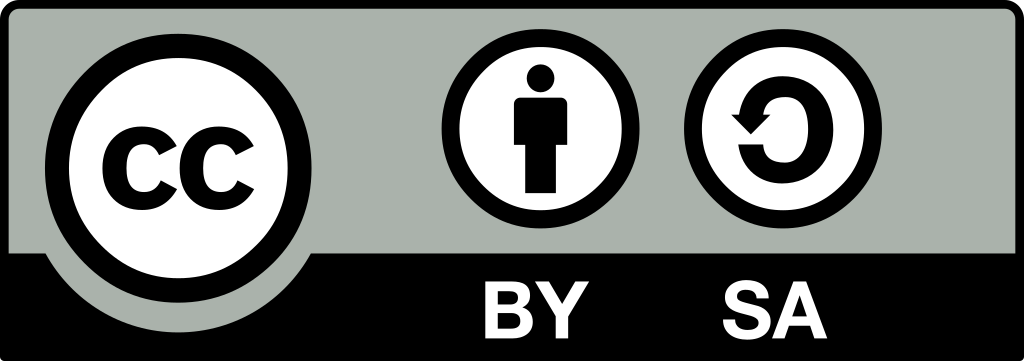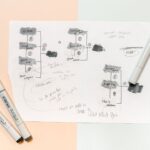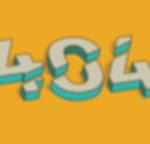It’s very common for any tutorial to treat light as an addition to the picture, an atmosphere-maker. We can easily get the impression that the object has a universal form, and then with proper lighting we can change the mood of the picture. The truth is without light there would be nothing to paint or draw! Until you realize that, you’re shooting blind.
In this challenge, I’ll introduce you to the art of seeing light, shadows, reflections, and edges.
How Can We See?
As an artist, have you ever tried to answer this question? If not, that’s a big mistake. Everything you draw is a representation of seeing. There’s even more to it—what we draw is not reality or an objective image of reality. It’s an image created by your brain, an interpretation of signals caught by your eyes. Therefore, the world as we see it is only an interpretation of reality, one of many—and not the truest or most perfect of them all. Only good enough for our species to survive.
Why am I talking about this in this challenge? Because drawing, and painting in themselves are an art of darkening, lighting, and coloring certain parts of the paper (or screen) to create an illusion of looking at something real. In other words, an artist tries to recreate an image that could be created by our brain (it makes it easy for us since we think in patterns—we tend to look for familiar shapes in abstract pictures). This I taught you in exploratory.
If a picture is similar to what we see in our minds, we say it’s realistic. It may be realistic despite not having any recognizable shapes or outlines—remember the organic shape that looked like broccoli or the cloud that looked like a rabbit, all you need are a few patches of color, light, and shadow to bring something familiar to mind. To create a convincing picture similar to one created by the brain, first, you need to know how the brain does it.
So What Is Seeing?
Let’s go back to the fundamentals of optics. A light ray hits an object and bounces to your eye. Then the signal is processed by your brain and the image is created. That’s pretty well-known, right? But do you realize all the consequences that stem from that process?
Here comes the first, the most important rule of art: light is the only thing we can see. It’s not an object, not a color, not a perspective, not a shape. We can see only light rays, reflected from a surface, disturbed by the properties of the surface and our eyes. The final image in our head, one frame of the never-ending video, is a set of all the rays hitting our retina at that one moment. That’s exactly what we’re doing when we are drawing or painting—we imitate rays hitting different surfaces (color, consistency, gloss), the distance between them (the amount of diffuse color, contrast, edges, perspective), and most certainly we don’t draw things that don’t reflect anything we cannot see to our eyes.
What is Shadow?
To put it simply, the shadow is an area untouched by direct light. When you’re staying in shadow, you’re not able to see the source of light. That’s obvious, right?
The length of shadow can be easily calculated by drawing the rays:
Drawing shadows may be a little tricky though. Let’s take a look at this situation. We’ve got an object and a big light source. Intuitively, this is how we draw the shadow:
But wait, this shadow is actually cast just by a single point on the light source! What if we choose some other point?
As we can see, only point light creates a sharp, easily defined shadow. When the light source is bigger (more scattered), the shadow gains a blurry, gradient edge.
The phenomenon I’ve just explained is responsible for supposedly multiple shadows coming from a single light source too. This kind of shadow is more natural—that’s why pictures were taken with flash look so sharp and odd.
Ok, but that was just a hypothetical example. Let’s take a look at this process in practice. Here’s my tablet pen stand, photographed on a sunny day. Can you see the weird double shadow? Let’s take a closer look.
So, light comes from the left lower corner, roughly. The problem is it’s not a point light, so we don’t have the nice, sharp shadow that’s the easiest and most intuitive to draw. Drawing rays like this don’t help at all!
Let’s try something different. According to what we’ve just learned, a big, scattered light source is made of many point light sources. When we draw it like this, it makes much more sense:
To explain it more clearly, let’s obscure some of the rays. See? If not for these scattered rays, we’d have a pretty normal shadow!
No Seeing Without Light
But wait, if the light doesn’t touch the area, how can we see something that is in shadow? How can we see anything on a cloudy day, when everything is in the shadow of the clouds? That’s the result of diffused light. We’ll talk more about diffused light throughout this article.
If a surface is polished and has a proper, light-blocking structure, a ray hitting it will be reflected at the same angle. An almost perfect surface for full reflection is, of course, a mirror, but some other materials give a good effect too (metal and water are examples of this).
While specular reflection creates a perfect image of the reflected object thanks to the correct angle, diffuse reflection is far more interesting. It’s responsible for color (we’re going to talk about this in more detail in the next part of this series) and it lights up the object in a softer way. So, basically, it makes an object visible without burning your eyes out. Materials have various factors of reflection. Most of them will diffuse (and absorb) a huge part of the light, reflecting only a small part as specular. As you probably already guessed, glossy surfaces have a higher factor of specular reflection than matte ones.
Value Is the Amount of Seeing
Value is the amount of information brought to light. We’re not talking about color yet—for now, our rays can be only darker or lighter. 0% value (brightness) is no information. It doesn’t mean the object is black—we just don’t know anything about it and perceive it as black. 100% value is the maximum amount of information we can get at a time. This interpretation will help us understand contrast. Contrast is defined as a difference between points—the bigger the distance between them on a value scale, the stronger the contrast. Our brain perceives depth by calculating the difference between images seen by each eye, and with distance, this difference becomes less and less significant. In the end, distant objects seem flat, and close ones are more 3D.
Edges (lines) are a side effect of proper lighting in the picture. If your artwork looks flat and you need to draw outlines to bring attention to the shapes, you’re doing it wrong. Lines should appear on their own as borders between two different values, so they’re based fully on contrast. If you use the same value for two objects, you’ll make them look merged.
The Art of Shading
After all this theoretical stuff you should have pretty good knowledge on what’s actually happening when you draw or paint anything. Let’s talk about practice now. The biggest issue with shading is that it’s about creating a 3D effect on a flat sheet of paper. However, it’s no different from drawing in 3D! An artist can go pretty far avoiding this problem, focusing on a full cartoon style, but eventually, if they want to progress, they’ll need to face their arch-enemy: perspective. What does perspective have to do with shading? More than one could think. Perspective is a tool to draw 3D objects in 2D without making them look flat. Since they’re 3D, light strikes them in various ways, creating highlights and shadows.
So next time you prepare a sketch for your artwork, don’t draw it as line art. We don’t need lines, we need 3D shapes! Build your objects using figures in perspective—make the shapes show. If you define the shapes properly, not only will your object look 3D, but you’ll find shading is suddenly surprisingly easy.
Once the basic, flat shading is done, you can refine it, but don’t add any details before that point! Basic shading defines lighting and lets you keep everything consistent.
Terminology
Let’s take a look at the correct terminology when discussing light and shadow.
- A highlight is a place where the reflection finds its way to your eyes. It is the brightest point of the shape.
- Core shadow is the area that faces away from the light source and is therefore not illuminated by it.
- Reflected light is diffuse reflection hitting the core shadow. It is never brighter than the full light.
- Cast shadow is the area blocked from the light source by the object.
Although it may seem obvious, the main lesson you need to take from this is the stronger the light, the sharper the illusion. Therefore, a sharp shaded line is an indicator of some kind of artificial light source. To avoid it, always blur the area between light and shadow.
Light forms everything we see. It constantly hits our eyes, bringing information about the environment. It’s the primary source of every image and should be considered the only thing we can see. If you want to create anything realistically, forget about lines, about well-known shapes—see them as something invisible, swamped with light. For now, it may look just like a bunch of theories, but look around and you’ll realize it’s everywhere. Start using it!
Your Challenge
Your challenge is to draw your hand in 4different poses, left or right. So 4 in all. However, you will need to find a way to light your hand creatively in 4 different ways. Each pose should be the size of your actual hand, so you should be able to fit 2 per page. Start with the basic construction seen below.
Then move on to the shading… Finally, start to create a finished hand.
Finally, start to create a finished hand.
When done, take a picture and upload it.



















